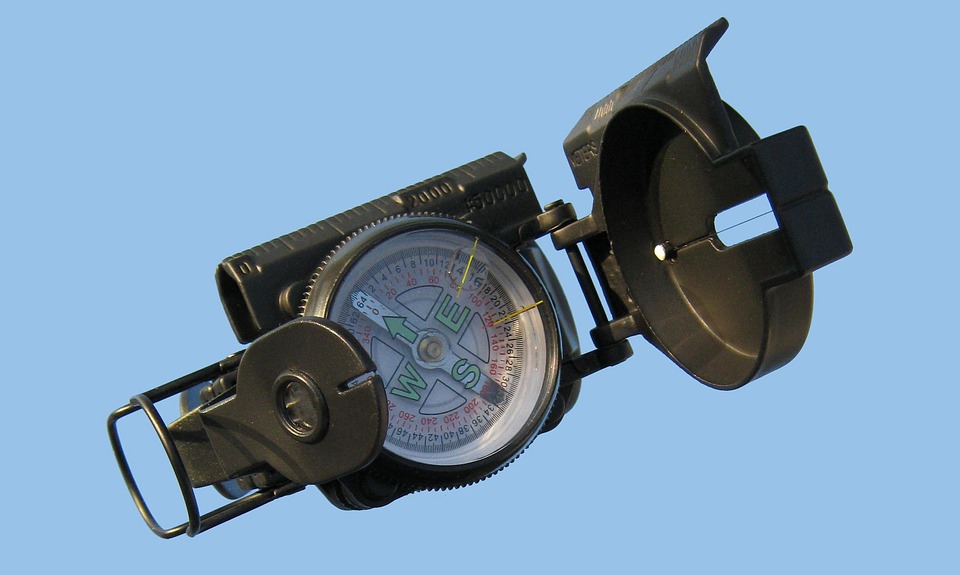
On this Page
On the Same Topic

Unlocking Homeownership: An Introduction to Low Doc Home Loans

Understanding Second Charge Mortgages: A Comprehensive Guide

Understanding Prime Residential Mortgages: What Homebuyers Need to Know
Navigating Easy Home Loans: Your Path to Homeownership Made Simple
<h1>Navigating Hassle-Free Home Loans: Your Simple Guide to Homeownership</h1>
<br />
<p>Owning a home is a cherished aspiration for many, representing security, investment, and personal success. Nevertheless, the journey to homeownership can appear overwhelming, particularly when it comes to financing. A crucial aspect of this process is grasping the concept of hassle-free home loans. This article aims to guide you through the numerous facets of home loans, aiding you in traversing the often complex landscape of home financing.</p>
<br />
<h2>Understanding Hassle-Free Home Loans</h2>
<br />
<p>Hassle-free home loans are mortgage options designed to streamline the borrowing process, making it more attainable for first-time buyers and those with imperfect credit. These loans frequently offer lower down payment requirements, reduced closing costs, and more forgiving eligibility standards. The objective is to dismantle obstacles that could hinder individuals from realizing their home ownership goals.</p>
<br />
<h3>Types of Hassle-Free Home Loans</h3>
<br />
<p>There are various types of hassle-free home loans tailored to diverse needs and situations. Below, we will delve into some of the more popular choices:</p>
<br />
<h4>1. FHA Loans</h4>
<br />
<p>Federal Housing Administration (FHA) loans are among the most sought-after options for first-time homebuyers, allowing down payments as low as 3.5% and catering to borrowers with lower credit scores.</p>
<br />
<h4>2. VA Loans</h4>
<br />
<p>Available to veterans, active-duty service members, and qualifying spouses, VA loans come with several advantages, including no down payment and no mortgage insurance. These loans are backed by the Department of Veterans Affairs, making them an appealing choice for eligible individuals.</p>
<br />
<h4>3. USDA Loans</h4>
<br />
<p>The United States Department of Agriculture (USDA) loans aim to encourage homeownership in rural regions. They offer zero down payment options and are aimed at low to moderate-income buyers who meet specific criteria.</p>
<br />
<h4>4. Conventional Loans</h4>
<br />
<p>Although conventional loans typically necessitate higher credit scores and down payments, certain lenders provide “high-LTV” options that allow lower down payments for borrowers with good credit. These loans may be ideal for those with stable incomes.</p>
<br />
<h2>The Advantages of Hassle-Free Home Loans</h2>
<br />
<p>Why should you look into hassle-free home loans? Here are some significant benefits:</p>
<br />
<h3>Accessibility</h3>
<br />
<p>Hassle-free home loans generally have relaxed requirements and cater to individuals with lower incomes or credit scores, making homeownership more achievable.</p>
<br />
<h3>Lower Down Payments</h3>
<br />
<p>Many hassle-free home loan options require substantially lower down payments compared to traditional mortgages, allowing you to retain more funds for other expenses or investments.</p>
<br />
<h3>Flexible Credit Standards</h3>
<br />
<p>Hassle-free home loans usually have less stringent credit criteria, which can benefit first-time buyers or those recovering from financial challenges.</p>
<br />
<h2>Navigating the Application Procedure</h2>
<br />
<p>The application process for hassle-free home loans might vary slightly between lenders, but certain steps remain constant across institutions. Here's a brief overview:</p>
<br />
<h3>1. Assemble Documentation</h3>
<br />
<p>Before you begin your application, gather essential documents, such as:</p>
<ul>
<li>Proof of income (pay stubs, W-2s, bank statements)</li>
<li>Tax returns for the last two years</li>
<li>Debt information (other loans, credit card balances)</li>
<li>Employment history</li>
</ul>
<br />
<h3>2. Prequalification</h3>
<br />
<p>Many lenders provide a prequalification service, letting you determine how much you can borrow based on your financials. This step is vital, as it helps you set a budget and narrow your home search.</p>
<br />
<h3>3. Compare Lenders</h3>
<br />
<p>Do not accept the first loan offer you encounter. Instead, shop around and review rates and terms from several lenders to ensure you find the optimal option tailored to your needs.</p>
<br />
<h3>4. Formal Application</h3>
<br />
<p>After selecting a lender, you will need to complete a formal application, which usually requires a credit check. Be ready for this step, as lenders may request additional documentation during this phase.</p>
<br />
<h3>5. Underwriting</h3>
<br />
<p>Once you've submitted your application, it will proceed to underwriting. This phase verifies your financial history and assesses the risk of lending to you. Approval can take anywhere from a few days to several weeks.</p>
<br />
<h3>6. Closing</h3>
<br />
<p>If your loan is approved, you’ll move to the closing stage. This finalizes the sale, and you’ll receive the keys to your new home! Make sure to review all closing documents carefully.</p>
<br />
<h2>Calculating Manageable Monthly Payments</h2>
<br />
<p>Your monthly mortgage payment will have a significant impact on your overall financial plan. Here are some factors to take into account:</p>
<br />
<h3>1. Principal and Interest</h3>
<br />
<p>Your monthly payment encompasses the principal (the initial loan amount) and interest (the cost of borrowing the funds). This typically constitutes the largest part of your mortgage payment.</p>
<br />
<h3>2. Property Taxes</h3>
<br />
<p>Many lenders will include property taxes in your monthly mortgage payment, which may be deposited into an escrow account to ensure timely payment.</p>
<br />
<h3>3. Homeowners Insurance</h3>
<br />
<p>Homeowners insurance safeguards your home from potential damages. Similar to property taxes, insurance costs may be incorporated into your monthly payment through an escrow account.</p>
<br />
<h3>4. Mortgage Insurance</h3>
<br />
<p>If your down payment is less than 20%, you may need to pay for mortgage insurance, which protects the lender in case you default on the loan.</p>
<br />
<p>Being well-informed about all components of your monthly payment can aid in effective budgeting and make homeownership more manageable.</p>
<br />
<h2>Common Myths about Hassle-Free Home Loans</h2>
<br />
<p>Misunderstandings surrounding the home loan process can lead to confusion and unwarranted stress. Here are some myths clarified:</p>
<br />
<h3>Myth 1: You Must Have a 20% Down Payment</h3>
<br />
<p>Many people think a 20% down payment is obligatory. While this is standard for conventional loans, numerous hassle-free home loans allow for significantly lower down payments.</p>
<br />
<h3>Myth 2: Only First-Time Buyers Qualify</h3>
<br />
<p>Although hassle-free home loans are particularly beneficial for first-time buyers, they can also assist repeat buyers and those interested in refinancing.</p>
<br />
<h3>Myth 3: A Perfect Credit Score Is Necessary</h3>
<br />
<p>While a good credit score is certainly advantageous, many hassle-free home loans are available for individuals with lower scores. Explore your options and find a lender willing to work with your unique financial situation.</p>
<br />
<h2>Preparing for Homeownership</h2>
<br />
<p>Securing a hassle-free home loan is just one part of the journey. Here are additional steps to ensure a smooth transition into homeownership:</p>
<br />
<h3>1. Evaluate Your Finances</h3>
<br />
<p>Conduct a comprehensive assessment of your finances, including income, expenses, and debt levels. This evaluation will help you determine what you can realistically afford.</p>
<br />
<h3>2. Budget for Extra Costs</h3>
<br />
<p>In addition to the down payment, be ready for other expenses related to purchasing a home, such as closing costs, moving expenses, and ongoing home maintenance.</p>
<br />
<h3>3. Investigate Neighborhoods</h3>
<br />
<p>Research various neighborhoods to find areas that align with your lifestyle, budget, and long-term aspirations. Consider important factors like schools, transportation, and nearby amenities.</p>
<br />
<h3>4. Collaborate with a Real Estate Agent</h3>
<br />
<p>A skilled real estate agent can be an invaluable partner throughout your home-buying experience. They can help you identify suitable properties and manage negotiations.</p>
<br />
<h2>FAQs</h2>
<br />
<h3>1. What differentiates fixed-rate from adjustable-rate mortgages?</h3>
<p>Fixed-rate mortgages maintain constant interest rates throughout the loan term, whereas adjustable-rate mortgages (ARMs) can have rates that fluctuate based on market conditions.</p>
<br />
<h3>2. How can I enhance my credit score prior to applying for a loan?</h3>
<p>To boost your credit score, focus on paying down existing debts, making all payments promptly, avoiding the opening of new credit accounts, and checking your credit report for inaccuracies.</p>
<br />
<h3>3. Can I refinance my hassle-free home loan later?</h3>
<p>Yes, refinancing is an option and can lead to lower monthly payments, reduced interest rates, or shifting from an adjustable to a fixed-rate mortgage.</p>
<br />
<h3>4. Are closing costs negotiable?</h3>
<p>Yes, closing costs can often be negotiated with the seller or your lender, although this depends on local market conditions and your personal financial situation.</p>
<br />
<h3>5. How do I determine how much I can afford to borrow?</h3>
<p>Consider elements such as monthly income, outstanding debts, and living expenses. A general guideline is that your monthly payment should not exceed 28% of your gross income.</p>This revised article captures the essential information about navigating hassle-free home loans while responding to common inquiries. If you need further modifications or additional information, please don’t hesitate to reach out!